Highland brown shell laying hen breeding points, Highland brown shell laying hen breeding technology!
Abstract: Hyland brown shell layer is a four-line excellent layer breed cultivated by Hyland International Co., Ltd. Highland brown shell laying hens have the characteristics of strong adaptability, cold tolerance, heat resistance, strong disease resistance and high survival rate. Hyland brown shell laying hens are suitable for large-scale breeding, with low stress response. it has the excellent characteristics of high feed reward, high egg production and high survival rate, which is the main breed of laying hens in China. The following details to understand: Highland brown shell laying hen breeding techniques Highland brown shell laying hens breeding technology.
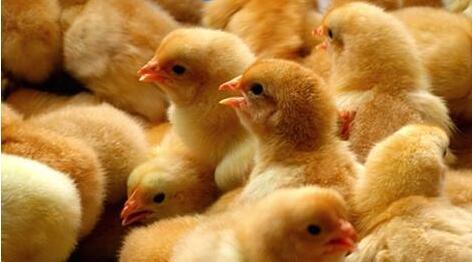
1. Management of brooding period of Highland brown shell laying hens
The stage from 1-day-old to 7-week-old is called the rearing period of Highland brown shell laying hens. First of all, it is necessary to clean the nursery room and strictly disinfect it. Three times disinfection can be used. The first time it was sprayed with 5% fiery alkali, the second time it was disinfected with iodine or chlorine, and the third time it was fumigated with potassium permanganate solution. The disinfection interval should be one week. Before entering the chick, the indoor temperature should be kept at 35-36 ℃. At the age of 1-3 days, the room temperature should be kept at 35-36 ℃; at 4-7 days, it should be kept at 33-34 ℃, and then decreased by 2 ℃ per week until the temperature was kept at 21 ℃. The relative humidity can be maintained at 65% and 70% during brooding. As the newly hatched chicks may not eat or drink water without light stimulation, they should maintain strong light of 20 to 23 hours a day for the first 3 days after hatching, until they gradually return to normal light after 7 days. In a fully enclosed chicken house, a 40-to-60-watt bulb is generally used, and the distance between the lights is about 3 meters.
two。 Management of breeding period of Highland brown shell laying hens
The breeding period of Hyland brown shell laying hens is 7-20 weeks old, when the laying hens have the ability to adapt to the external environment and have a sound ability to regulate body temperature. The temperature is generally maintained at 18-23 ℃ and the humidity is maintained at 60%-70%. At the same time, do a good job of ventilation, timely removal of ammonia, carbon dioxide, hydrogen sulfide and other harmful gases in the chicken house. With the increase of the age of Hyland brown shell laying hens, the density should be adjusted in time. Taking caged chickens as an example, 24 Highland brown shell laying hens can be placed per square meter at the age of 7 to 10 weeks, and 14 to 16 Hyland brown shell laying hens can be placed per square meter at the age of 10 to 20 weeks. At the same time, it should be reasonably matched with the feed composition during the breeding period, which can appropriately reduce the protein content in the feed and prevent the chickens from getting too fat. After 15 weeks of age, the feed formula should be adjusted again to increase the content of calcium in the feed so that the laying hens can deposit enough calcium before laying. During the breeding period, it is generally fed 3 to 4 times a day. If the chicken population is found to be overweight, the feeding times and amount can be reduced appropriately. Light will affect the sexual maturity of chickens, so you can keep the light for 11 hours during breeding.
3. Management of laying period of Highland brown shell laying hens
During the laying period, the management of temperature, humidity and ventilation can be consistent with the breeding period. At the same time, the egg production can be increased by appropriately increasing the light. On the basis of the light during the breeding period, the light can be increased by 1 hour per week until the daily light is increased to 15-16 hours, and then it can be maintained. In a closed chicken coop, a 40-60 watt bulb can be used, and the distance between the lights should be 3 meters. During the laying period, laying hens need a lot of calcium, phosphorus, vitamins and trace elements, so it is more necessary to achieve adequate and balanced nutrition, so as to ensure the best production performance of laying hens. At the age of 19-40 weeks, the feed formula should contain corn 57.6%, soybean meal 24.5%, fish meal 3%, bone meal 2.5%, wheat bran 5%, shell powder 7%, feed additive 0.15%, amino acid 0.15%, choline 0.1%. Every 100 kilograms of feed was added with 15 grams of compound multi-dimensional 20 grams. At the age of 40-60 weeks, you can refer to the following formula: corn 60.18%, soybean meal 21.5%, fish meal 2.5%, bone meal 2.5%, wheat bran 5.6%, shell powder 7%, salt 0.35%, feed additive 0.15%, amino acid 0.12%, choline 0.1%. Compound multi-dimensional 15g was added to every 100 kg feed. After the age of 80 weeks, the egg production of Hyland brown shell laying hens decreased, the feed-egg ratio increased, and gradually lost the production value, which can be eliminated as commercial chickens. Generally speaking, the feeding and management of Highland brown shell laying hens is relatively easy, the rate of return is high, and the economic benefit is good.
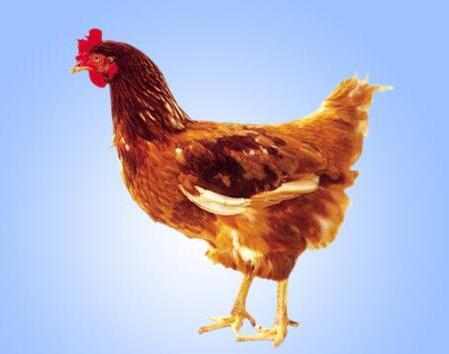
Breeding techniques of Hyland brown shell laying hens
There are certain standards for the nutritional needs of laying hens at all stages. Excessive nutrition in feed will not only cause waste and increase cost, but also make laying hens overweight and affect laying performance; insufficient nutrition in feed will lead to weight inhibition of laying hens, destroy the normal growth of laying hens, and lose their due high-yield performance. Therefore, laying hen breeders should work out a reasonable feeding formula according to the nutrition standards of laying hens at each stage.
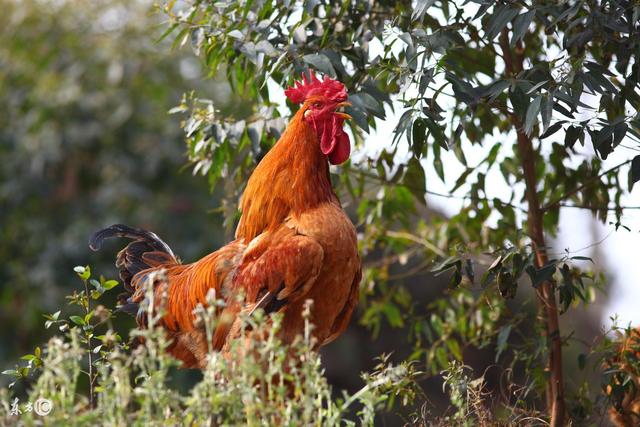
1. Highland brown shell laying hens planning and site selection and henhouse construction
1. Site selection of Highland brown shell laying hens. First of all, it is considered to be in line with the local land use planning, and secondly, it is conducive to epidemic prevention, high and dry terrain, away from market towns, trunk roads and railways.
More than 1000m, more than 500m away from secondary traffic roads and residential areas, and there are no chemical plants, mining plants, tanneries, meat packing plants, slaughterhouses, garbage and sewage treatment plants within 2000m.
2. Infrastructure of Hyland brown shell laying hens. There is a stable clean water source, the water quality should meet the "pollution-free Food, Livestock and Poultry drinking Water quality Standard (NY5027-2001)", the power supply is guaranteed, the transportation is convenient, and there is a special lane leading to the scene.
3. Hyland brown shell laying hens are of moderate scale and 10, 000 to 50, 000 are built in a single field. If the scale is too large, it is not conducive to all in and out, and increases the difficulty of management; if the scale is too small, the proportion of technology and management costs in the total cost will be increased, and the benefit will be reduced. At present, the breeding scale of 10,000 ~ 50,000 laying hens in China is the main trend, small-scale is gradually eliminated, super-large-scale one-time investment is too large.
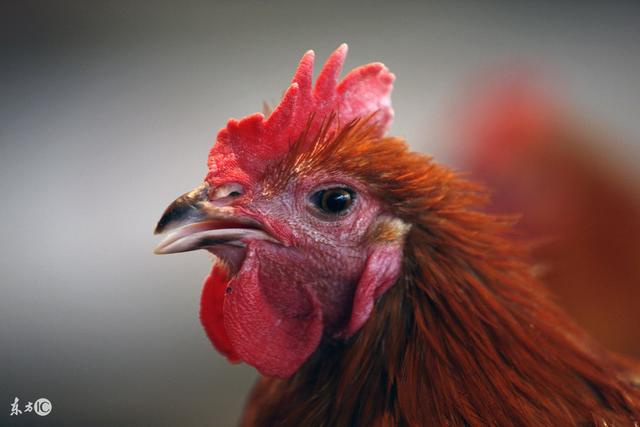
4. Hyland brown shell laying hens are distributed. Controlling the spread of epidemic disease has become the key to the benefit of laying hens, and the intensive breeding community model has been denied because of the difficulty of epidemic prevention. At present, moderate decentralized layout and appropriate spacing among chicken farms are advocated, which is conducive to the establishment of biosafety system, improve the effect of epidemic prevention and reduce the risk of epidemic disease.
5. The type of Hyland brown shell laying hens. It is mainly recommended that there are two kinds of chicken coops with open windows and closed chicken coops, in which the closed chicken coop is the best, and it is best to build the closed chicken coop if there are conditions. The cost of the windowed open chicken house is relatively low, the daily production can make full use of natural light and natural ventilation, save electricity, and the production operation cost is lower than that of the closed chicken house. However, the open chicken house is easily affected by the external environmental conditions, the thermal insulation performance of the chicken house is not as good as that of the closed chicken house, and the production level, such as feed reward, egg laying performance, adult chicken death rate and other technical indexes are not as good as the closed chicken house. Although the cost of daily production and operation of the enclosed chicken house is high, the microclimate of the chicken house is well controlled, the air quality in the chicken house is good, the living environment of the flock is suitable, the production level is high, and the death rate is low.
The layout of the open chicken house can adopt two rows of three walkways, three rows of four aisles, and the closed henhouse can use three rows of four aisles and four rows of five aisles. Matching cages can be 3-step or 4-step.
6. Supporting equipment for Hyland brown shell laying hens. It is suggested that hot air stove heat preservation and brooding, nipple drinking water, mechanical feeding, mechanical fecal cleaning, fan wet curtain cooling, and emergency power generation equipment should be equipped with conditions.
2. Breeding techniques of Highland brown shell laying hens at different stages
The main results are as follows: 1. Highland brown shell laying hens are raised at high temperature with ∶ during the brooding period.
Highland brown shell laying hens should be suitable for density, reasonable ventilation and high quality feed. Hyland brown shell laying hens prevent Newcastle disease, bursal disease, transmission branch and vitamin amino acid deficiency can cause poor growth. The feed and medicine of Hyland brown shell laying hens should not be stored in a high temperature nursery to avoid mildew and quality. Highland brown shell laying hens are supplied regularly to avoid uneven. Hyland brown shell laying hens at the age of 7-9 days had the least effect of beak breaking stress. Strive for a success. Pay attention to the use of antibiotics and vitamins within 5 days during the beak breaking period of Highland brown shell laying hens. At the same time, a thick feed layer is maintained to prevent the chicken from pecking at the end of the feed and bleeding when it touches the trough. Disinfecting the ground with 1% Mel 3% fiery alkali solution every day or every 3 days can effectively kill bacteria and coccidiosis. Reduce disease and bad odors. The density and feed formula were adjusted according to the body weight of Hyland brown shell laying hens. Highland brown shell laying hens are reared in time. Highland brown shell laying hens ensure weight and evenness are up to standard. At the end of brooding, Hyland brown shell laying hens should continue to use chicken feed until the weight is up to the standard if there is a weight difference.
2. During the breeding period, Hyland brown shell laying hens should focus on the technique of body weight breeding.
Hyland brown shell laying hens must reach the weight standard before they are 12 weeks old. The degree of uniformity is more than 80%, do not use inferior feed, strengthen ventilation and disinfection. Highland brown shell laying hens focus on prevention of Newcastle disease and rhinitis, slow call, colibacillosis. Hyland brown shell laying hens use constant or decreasing light procedures to prevent precocity. The development of reproductive system of Hyland brown shell laying hens accelerated after entering 80 days old, and the nutrition should be balanced and adequate. The occurrence of respiratory disease and colibacillosis in Hyland brown shell laying hens at the age of nearly 100 days may cause serious damage to egg laying performance and lead to no egg production peak.
3. The laying period of Highland brown shell laying hens requires a stable environment and good nutrition management.
The nutrition of Hyland brown shell laying hens should be adjusted according to their development from adolescence to the early stage of laying, and the increase of stone powder and protein feed should have a transition of 2-3 weeks. After 90 days of age, Hyland brown shell laying hens should pay attention to the normal development of sternum to prevent calcium deficiency and supplement vitamins properly. The laying rate of Highland brown shell laying hens should reach about 96% during the peak period, and the laying rate should be maintained for more than 5 months when the feed-egg ratio is 2.0-2.3 and above 1.90%. Highland brown shell laying hens are fed evenly and cleanly in daily feeding to ensure that the chickens are eaten evenly and fresh. Highland brown shell laying hens use shading and mechanical ventilation to cool down in summer.
Spraying cold water mist on Highland brown shell laying hens can effectively reduce the decrease of feed intake and death caused by heat stress, and diseases in the early stage of egg production may cause serious damage to egg laying function. Highland brown shell laying hens focus on the prevention and control of Newcastle disease, transmission, avian influenza, throat and other viral diseases, rhinitis, slow call, colibacillosis, necrotizing enteritis and other bacterial diseases, white crown disease, chicken lice, ascariasis and other parasitic diseases. Attention should also be paid to fatty liver, gout, pecking, stubborn diarrhea, unexplained egg production and so on.
After 300 days of age, Hyland brown shell layers were properly supplemented with calcium and vitamin AD3 to improve eggshell quality. Proper use of drugs between the initial stage of production and the peak can prevent inflammation of the fallopian tubes and ovaries, which is good for increasing the laying rate and maintaining stability. Highland brown shell laying hens should pay attention to the epidemic trend of the disease and actively take measures to ensure high and stable yield. The sunshine time of Hyland brown shell laying hens is shortened in autumn and winter, and many cold chicken farms with artificial light control often turn on and off the lights in the morning and evening, resulting in the decline of egg production caused by light stress. Highland brown shell laying hens should actively supplement light in rainy and snowy days, and it is recommended to use electronic light controller to reduce human operation errors.
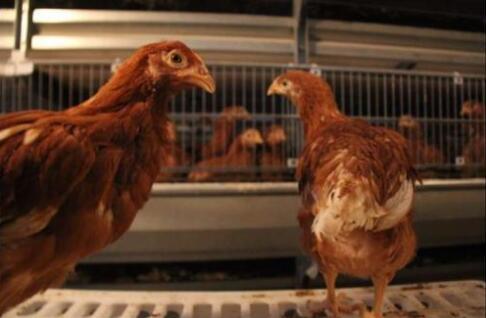
Third, the requirements of Hyland brown shell laying hens for water consumption and light.
The water consumption of Hyland brown shell laying hens directly depends on the ambient temperature and feed consumption, and the feed consumption depends on the ambient temperature. When the most suitable for chicken growth is 20-25 degrees, the amount of drinking water is twice as much as the feed consumption. When the ratio changes under the condition of high temperature, the feed consumption decreases and the water consumption increases.
Light can affect the survival rate of Highland brown shell layers, egg production will also change with the light of Highland brown shell laying hens, and light will also affect the overall benefits such as egg size. The basic lighting criteria for Hyland brown shell laying hens are:
The laying hens were exposed to 20 lux light for 20-22 hours on the first two days of laying, 8-10 hours per day with 5 lux intensity from the second day to the 8th week, and 8-10 hours a day from the 8th week to the 17th week. Or put it outside in normal weather or in a dimly lit house.
(2) when the body weight of Hyland brown shell laying hens reaches 1.47 kg, the light stimulation is initially increased by not less than 1 hour per day, and not less than 15-30 minutes per week until it reaches 16 hours. the time of light stimulation should last until the peak of egg production, and the light intensity should be increased to 10-20 lux.
(3) it is not allowed to reduce the light intensity and shorten the light time in adult Highland brown shell layers.
Fourth, the requirements of temperature, density, humidity and ventilation for Hyland brown shell laying hens.
The main results are as follows: 1. The rearing period of Highland brown shell laying hens: 0Mel 3-day-old 33Mel 36 ℃. The humidity is above 60 ℅. From then on, it will be reduced by 2 ℃ per week. Until 21mura 25 ℃. The specific operation depends on the season and the performance of the chicken. Look at Chicken Shiwen. Reasonable temperature and humidity at the age of one week is very important to improve the survival rate. Strictly guard against gas poisoning. High temperature brooding is beneficial to the absorption of yolk and the survival and rejuvenation of weak chickens. And reduce the incidence of pullorum and colibacillosis in chickens.
2. The suitable breeding period of Hyland brown shell laying hens is about 25 ℃. Low temperature can easily cause rhinitis and chronic respiratory disease.
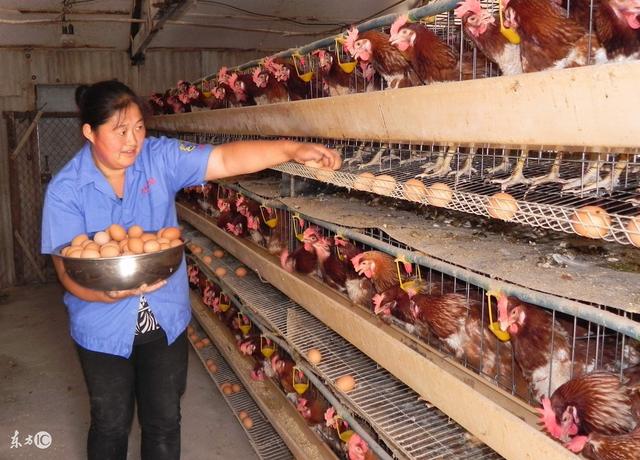
3. The laying period of Highland brown shell laying hens: 17Mel 26 ℃ is more suitable. The stress of chicken flocks was greater when the temperature difference was more than 5 ℃. More than 28 ℃ had obvious panting. More than 35 ℃ can cause heatstroke. Poor ventilation and high temperature do serious harm to the health of chickens. Pay attention to the weather forecast in autumn and winter to prevent the occurrence of respiratory diseases caused by a sharp drop in temperature caused by thieves and strong winds.
4. Highland brown shell laying hens molt 4 times from shell to 20-week-old. There are also seasonal and age molting. The amount of feather debris is large in the breeding period. Pay special attention to ventilation and disinfection. Otherwise, it may cause respiratory disease and colibacillosis.
5. Hailan brown shell laying hens density ∶ 1Mel 2 weeks old caged less than 60 per square meter. Less than 30 animals were raised peacefully, and about 40 animals per square meter were kept in captivity for 4 weeks. About 25 animals were raised peacefully, and 30 animals per square cage were raised for 6 weeks. Raise less than 20 animals on average. After 2 weeks of age, the flock density greatly affected the development and induced a variety of diseases. The air is dirty in dense flocks of chickens. Food and drinking water are restricted. The source of the disease can be accumulated in large quantities. It is easy to produce weak chickens and become susceptible chickens. Increase the risk of the disease. Because [provinces and localities "may pay a higher price.
Dear aquaculture friends, from now on, follow the official Wechat account: (Tianxingjian Biotechnology / txjdwyy), what are the breeding problems, market analysis, breeding doubts, disease prevention and treatment, policy interpretation we will have professional teachers to reply to you as soon as possible!
- Prev
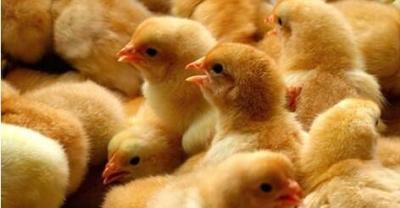
It turns out that azaleas should be cultured in this way, and you can't help but know these breeding skills!
The choice of soil: the cultivation of rhododendron should choose loose, fertile, acidic soil is better, so we should pay more attention to the purchase of soil! A suitable life.
- Next
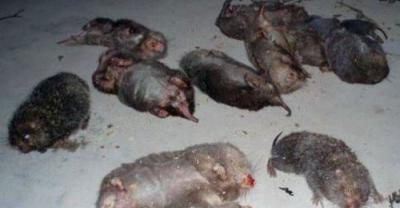
The culture methods and matters needing attention of Cymbidium have learned that you are the master of Cymbidium culture.
Speaking of hanging orchids, how much do you know about it? Next, let me tell you something about it. First of all, the hanging orchids we usually breed at home are usually.
Related
- On the eggshell is a badge full of pride. British Poultry Egg Market and Consumer observation
- British study: 72% of Britons are willing to buy native eggs raised by insects
- Guidelines for friendly egg production revised the increase of space in chicken sheds can not be forced to change feathers and lay eggs.
- Risk of delay in customs clearance Australia suspends lobster exports to China
- Pig semen-the Vector of virus Transmission (4)
- Pig semen-the Vector of virus Transmission (3)
- Five common causes of difficult control of classical swine fever in clinic and their countermeasures
- Foot-and-mouth disease is the most effective way to prevent it!
- PED is the number one killer of piglets and has to be guarded against in autumn and winter.
- What is "yellow fat pig"? Have you ever heard the pig collector talk about "yellow fat pig"?

